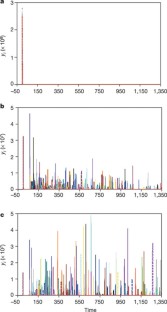

In this context, specific serology tools have been poorly developed and are mainly used retrospectively following an acute episode.īecause public awareness of Lyme disease is currently high in Europe and in the USA, the reliability of diagnostic tests, particularly serology, is regularly questioned by a few physicians and some patient's associations, mainly through the internet and on social media, based on testimonies. In contrast, relapsing fever borreliae can lead to massive bacteraemia during febrile episodes, which explains why the direct detection of the pathogen through microscopy, culture or PCR on a blood sample ( Eldin et al., 2019a) is favored. Subsequently, it enabled the development of the indirect diagnostic methods (i.e., serological assays) that are currently used for the biological diagnosis at the disseminated stage. But the seroreactivity to a spirochete isolated from Ixodes ticks in patients convalescing from Lyme disease was early reported by Burgdorfer et al.

In Lyme disease, following a localized infection (erythema migrans), bacteraemia is usually very moderate, of short duration, especially in Europe, and occurs at the very beginning of the dissemination that does not allow direct diagnosis from blood ( Eldin et al., 2019a). Indeed, relapsing fever group and Lyme disease borreliae differ in many ways, and diagnostic methods, particularly regarding the place of immunoserological diagnosis, reflect these differences. However, some authors advocate for the creation of a new Borreliella genus regrouping members of the Lyme disease group of borreliae, and this topic is still debated ( Barbour et al., 2017 Margos et al., 2017). miyamotoi, which is vectored by hard ticks) ( Talagrand-Reboul et al., 2018) whereas Lyme disease species and relatives are transmitted by hard Ixodid ticks ( Cutler et al., 2017), the latter species being known as Borrelia burgdorferi sensu lato complex. Within this genus, the borreliae have been classified based on phylogenetic differences related to ecological factors and clinical manifestations: relapsing fever species are mainly vectored by soft ticks (with the exception of the louse-borne B. Spirochetes of the genus Borrelia are widely distributed vector-borne pathogens. New two-tier testing strategies using two ELISA tests (C6 and WCS for example) to replace immunoblot are currently proposed by some authors and guidelines, and promising new tests such as CXCL-13 in CSF are promising tools for the improvement of the diagnosis of Lyme borreliosis. Finally, unconventional diagnostic tests have been developed recently in the context of a highly publicized disease, with widely varying results, some of which have no available evidence-based data. International guidelines have thus been proposed to avoid these difficulties with interpretation. The most frequent limitations and pitfalls of serology are cross reactions, false IgM positivity, a seronegative window period at the early time of the infection, and serologic scars with a suspicion of reinfection. This diagnostic strategy is based on a two-tier methodology involving a first test (ELISA) with high sensitivity and acceptable specificity and a second, more specific test (western blot) for diagnostic confirmation. In Lyme disease, because direct detection methods show low sensitivity, serology plays a central role in the diagnostic strategy. miyamotoi has renewed interest in serology in this context. However, emergence of the novel agent of relapsing fever B. Immunoserological assays have been poorly developed for relapsing fever borreliae, where direct detection methods are more adapted to the pathophysiology of these infections presenting with massive bacteraemia. Spirochetes of the genus Borrelia are divided into relapsing fever borreliae and Lyme disease borreliae. 5IHU-Méditerranée Infection, Marseille, France.



 0 kommentar(er)
0 kommentar(er)
